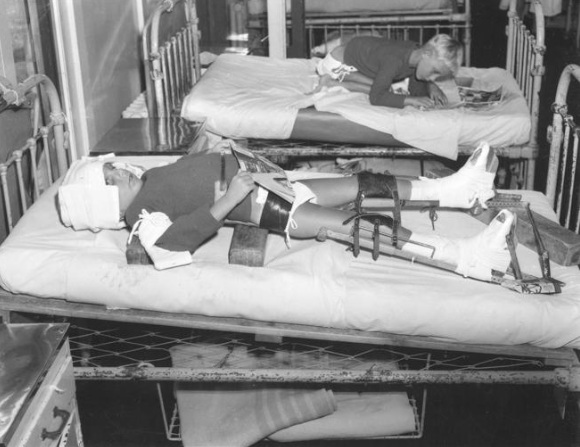The recent movie Breathe, the inspirational true story of Robin Cavendish’s battle with paralytic poliomyelitis, is a reminder of a disease that is almost forgotten, except by those whose lives were and remain directly affected. In recent years adults who suffered minor illnesses or had mild muscle weakness during the earlier epidemics are now also suffering unanticipated muscle weakness and atrophy.
As a physiotherapist who began working with polio victims, the film is a reminder of the long legacy of polio, the ongoing role of rehabilitation and the crucial role of vaccination in finally tackling the disease. From the early epidemics over a century ago, many physiotherapists devoted much of their professional lives to people who had been paralysed by polio. Physiotherapists assessed muscle strength and mobility, evaluated functional capacity and mobilised joints, stretched and exercised muscles, made plaster and fibreglass splints and abdominal corsets. Except for their physiotherapy sessions, double Thomas splints immobilised people with polio to prevent potential deformities which could limit future functional activities. Physiotherapists often spent years working with people with polio and their families to achieve the best possible outcomes with minimal residual disability. Breathe rekindled the memories of my early years of Fairfield Hospital’s respirator ward and the people in its ‘iron lungs’.
In most cases patients used respirators for only a short time, but others like Australian June Middleton, who contracted polio as a young, active woman of twenty-three, remained in an ‘iron lung’. When she died aged of 83, she was the world’s longest surviving person living with polio in a respirator.
These days, most children are vaccinated against polio before school age and this has seen the disease nearly completely disappear in most westernised countries. But in Afghanistan, Nigeria, Pakistan, Equatorial Guinea, Iraq, Cameroon, Syria, Ethiopia, Somalia and Kenya, polio still paralyses and kills. For those who are not vaccinated, this potentially lethal or incapacitating illness is only an aeroplane flight away.
A full-length version of the article can be found here.


Nursed June , & others, Fairfield infectious Disease hospital , circa 1956/7. Remarkable experience.